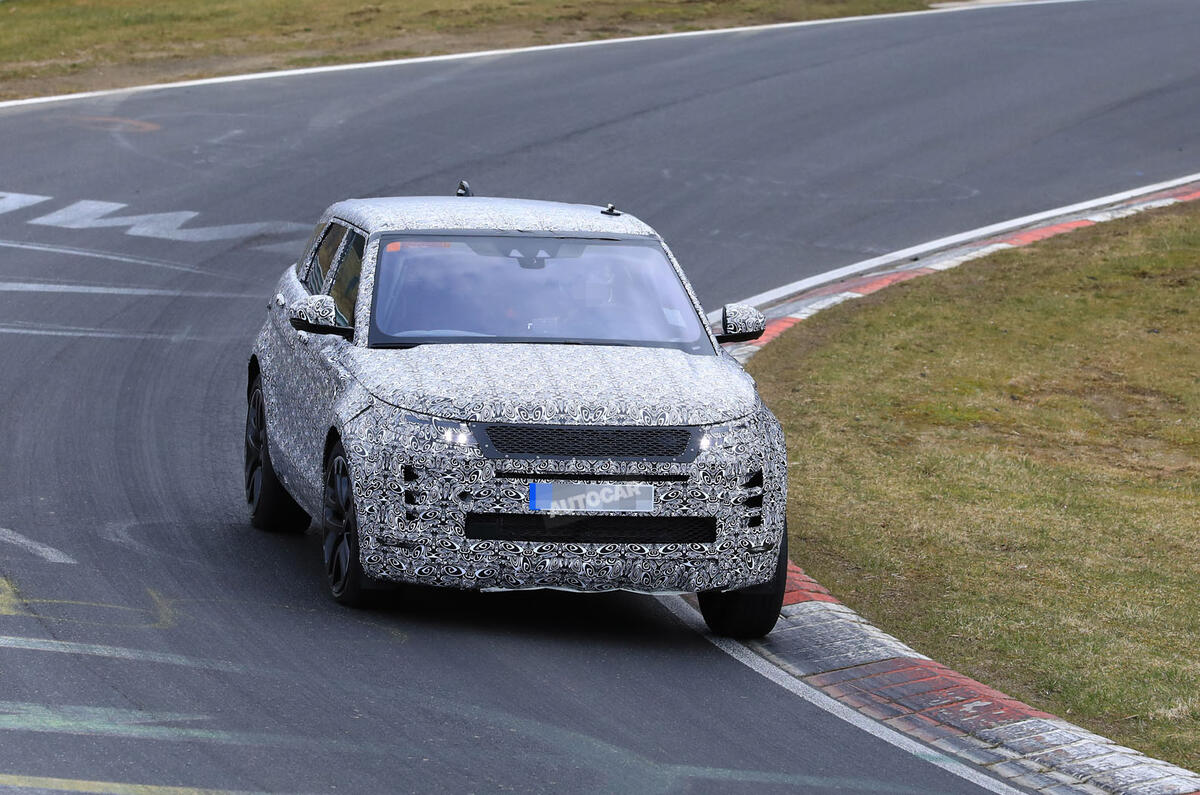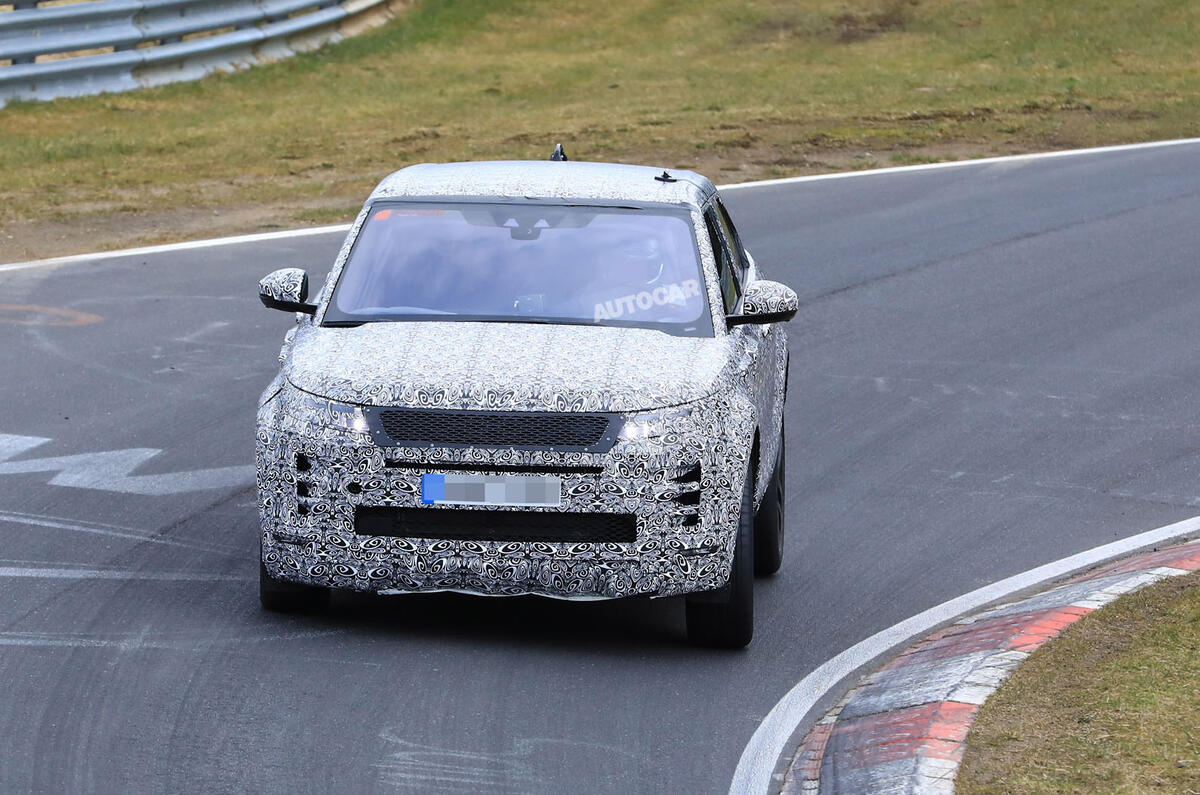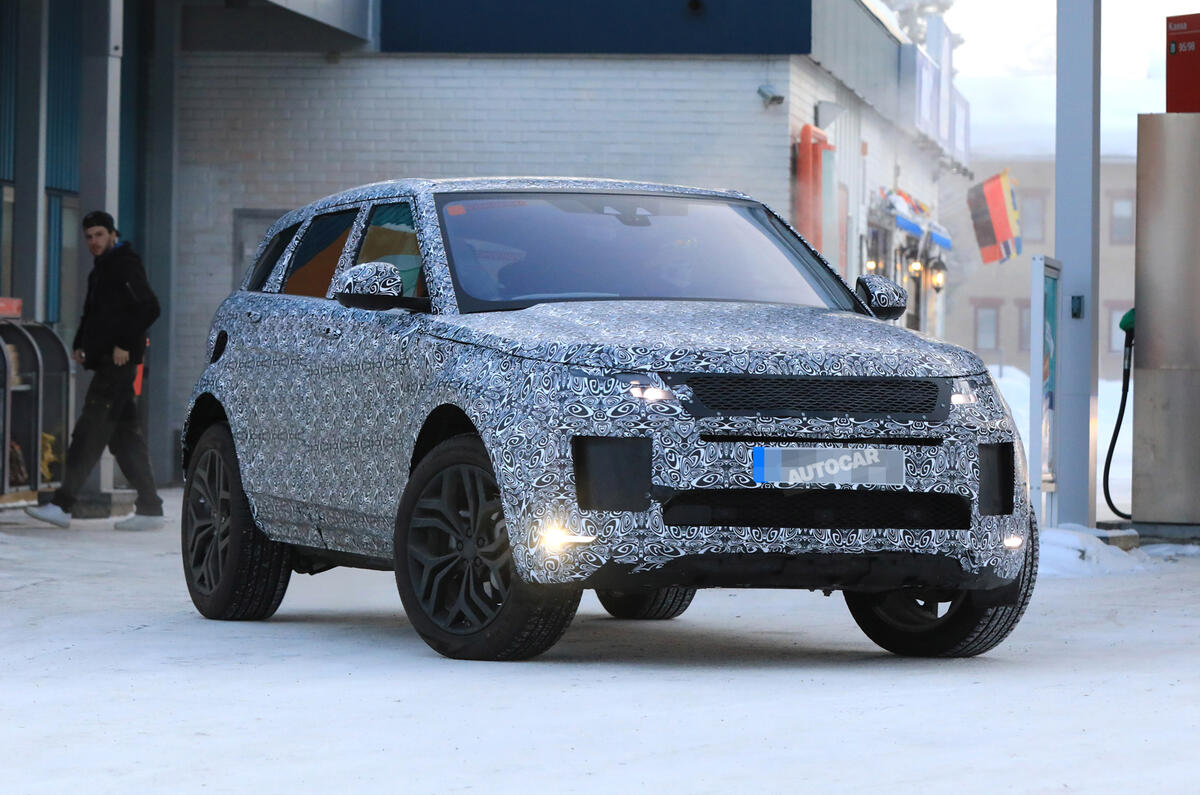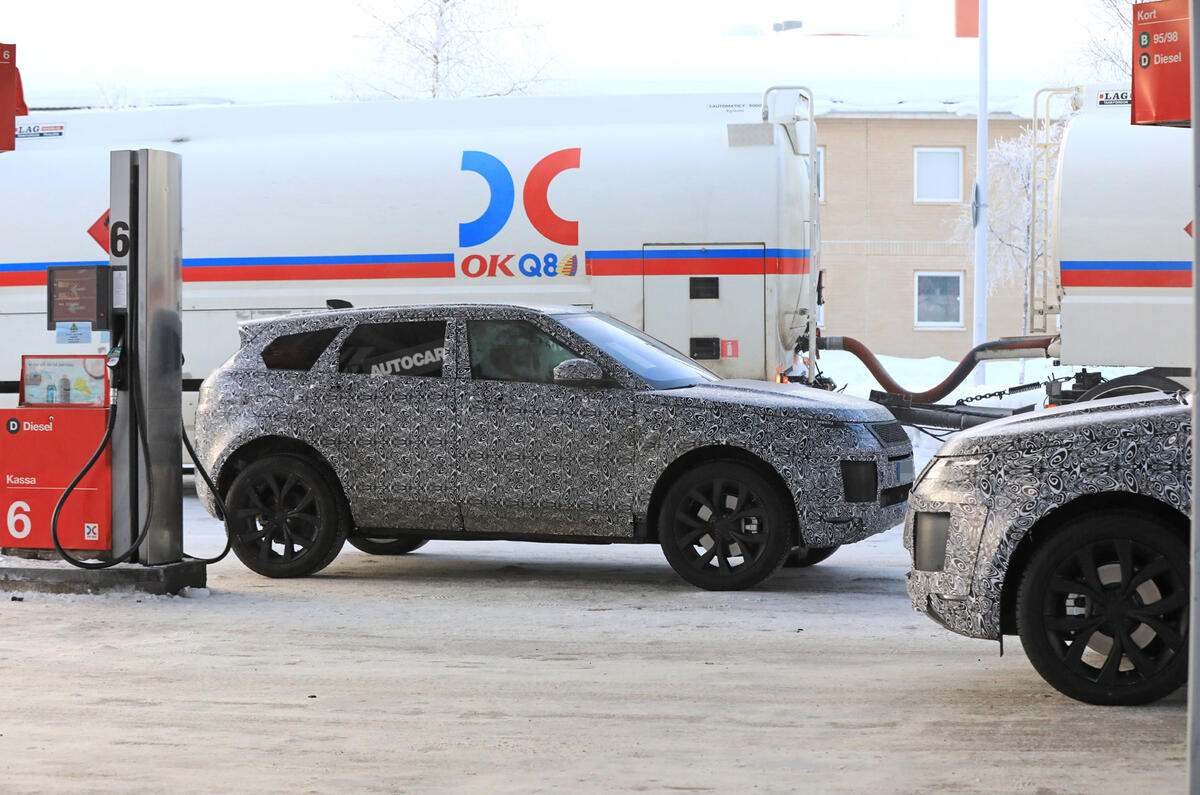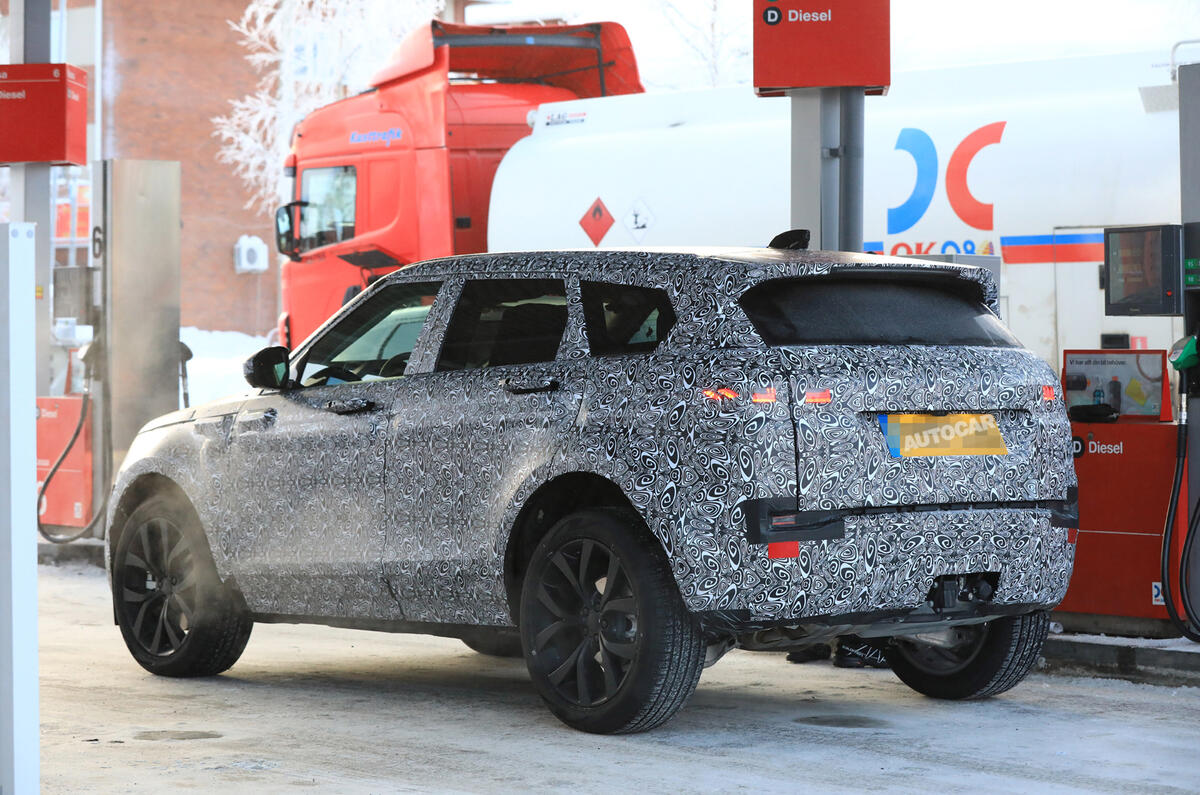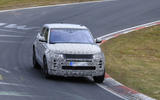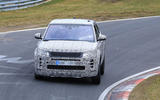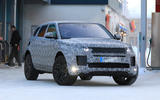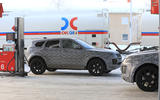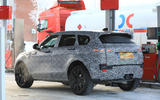Land Rover will launch its second-generation Evoque next year with ambitions of building on the immense success of its predecessor.
The current Evoque helped transform the company into the much larger and more successful one it is today. Sales have never dropped below 100,000 units annually, even six years after it was launched. The new car will have to at least maintain this trend and as such, it will evolve the formula rather than attempt to drastically alter it.
Engineers are therefore tasked with giving the 2019 model, which uses a heavily updated version of the current car's D8 architecture, the familiar traits that ensured the success of the Mk1 car, while ensuring it takes enough of a stride forward to keep up with the competition. It has just been spotted being put through its paces at the Nürburgring as part of chassis dynamics testing.

Designers will tinker little with the current car’s styling and maintain the distinctive coupé-like shape that helped define a segment. It will also add Velar-like features to enhance the car's premium image - as shown by the most recently spotted development car that wears slim taillights and pop-out door handles.
Jaguar Land Rover has a stated target of having an electrified version of each of its new models launched after 2020, but the Evoque will arrive just before that and consequently there will be no electrified version from launch.

However, it’s understood the Evoque is under consideration to be the first JLR model to get a new mild-hybrid drivetrain currently in development, which has been captured in prototype form. This combines a new three-cylinder 1.5-litre Ingenium engine with a small electric motor, backed up by a 48V electrical architecture to power ancillaries including air-con and the water pump. Equipping the Evoque with this powertrain will require extensive changes to the car’s underpinnings, and as such it will not be ready for launch until the early part of the next decade at the earliest.
A diesel-electric hybrid will also be available, as another electrified option in the same lineup.
The mild-hybrid set-up was previewed as part of the Evoque E technology project in 2015, and will be the hybrid drivetrain used across JLR’s natively front-wheel-drive models, currently the Evoque, Discovery Sport and E-Pace. Other front-wheel- drive models are understood to be under consideration as part of JLR’s plans to achieve one million sales per year, from a best of 621,109 in 2017.
How the Evoque changed JLR for the better
Prototype versions of the Evoque Mk2 are a regular sight around the company’s Gaydon engineering base ahead of UK sales in early 2019.

The current Evoque, codenamed L538, has become firmly established since its launch, and design boss Gerry McGovern believes there is no need for the concept to be reinvented, saying it should not “lose key ingredients” and would be designed with the intention of making it “more relevant”. McGovern said that even years after its launch, the Evoque Mk1 – the design of which can be traced as far back as the Land Rover LRX concept car from 2008 – remained a “very distinctive vehicle” that is “known for what it is: falling roof, rising beltline”.
McGovern: Electrification offers new opportunities
For the next-generation model, McGovern said the task was to “take [the current car’s] integrity and make [it] more relevant”. Land Rover, he added, was looking at “how to make the vehicle more modern, more precise, more comfortable, more luxurious, those things – not just pure aesthetics”.
The design is set to draw inspiration from the new Velar, which has already informed the styling changes to the recently revised Range Rover and Range Rover Sport models.

Much of the Velar’s interior technology, including its dual touchscreens in the centre console and wide digital instrument binnacle, will also be introduced on the Evoque, as part of the plan to boost the model’s connectivity options.
The evolution of the design will extend to the car’s underpinnings. The next-generation Evoque, codenamed L551, will be built on an overhauled version of the current car’s D8 architecture, which is Jaguar Land Rover’s only natively front-wheel-drive architecture for transverse-engined models. Other developments of D8 are used on the Land Rover Discovery Sport and the Jaguar E-Pace.
Refinements to the D8 underpinnings will focus on improving the ride comfort of the Evoque, and the comfort levels for passengers. The firm has always resisted creating a pure performance version of the Evoque – the model is considered every bit the ‘mini Range Rover’ in terms of luxury and refinement, both areas Land Rover will be looking to improve further with the second-generation car.

There will be no significant increase in size. The model will closely match the footprint of today’s car, which is 4390mm long and 1900mm wide. The wheelbase of 2660mm has been modestly increased to match the E-Pace’s 2681mm. In addition, the track widths have been increased and a redesigned trailing arm suspension set-up will be used at the rear. All of these changes are aimed at improving cabin space for rear passengers.
Land Rover’s suite of new four-cylinder, turbocharged Ingenium petrol and diesel engines, built at its Wolverhampton engine manufacturing plant, will carry over to the new Evoque, each engine a 2.0-litre unit ranging in power output from 148bhp to 237bhp for the diesels, and from 237bhp to 296bhp for the petrols. There will be further improvements to the fuel economy and CO2 emissions of the engines in their application in the second- generation Evoque, aided by the increases in refinement being engineering into the car’s architecture right from the start of development.
Front-wheel drive will be offered on entry-level versions of the new crossover, with all-wheel drive standard higher up the range. The latter is set to take the bulk of sales; most Evoques will sell for about £40,000, well above the expected starting price of around £33,000.
Each engine will be mated to JLR’s ZF-sourced nine- speed automatic gearbox, and Land Rover’s latest off-road technology will be offered to ensure the Evoque is no less capable than any other Land Rover model off road, a ‘credibility’ message the company continually pushes.

There are no confirmed plans to launch a pure electric Evoque due to the limitations of the D8 architecture, despite one of its closest rivals, the Volvo XC40, gaining a full-electric variant in 2019. The first electric Land Rover model will instead be the ‘Road Rover’ model, as exclusively revealed by Autocar. The name ‘Road Rover’ is a working title for the model, however, and when it makes production the car will wear the Range Rover badge.
The next-generation Evoque range is understood to be limited to a single five-door bodystyle. The original Evoque actually launched as a three-door ‘coupé’ version in 2011, followed a few months later by the five-door version, which has always been the best seller. Indeed, some sources put the five-door’s dominance as high as 95% of total production.
The Evoque line-up was extended further last year with the launch of the Evoque Cabriolet, which has been another success for Land Rover. The current version of the drop-top, which is priced from £45,250, will continue in production for some time after the launch of the next- generation Evoque, but a replacement is understood to be planned for the early part of the next decade.
Related stories:
Range Rover Evoque Landmark edition to celebrate 600,000 sales
Range Rover Evoque hits 500,000 - with a little help from Autocar
















